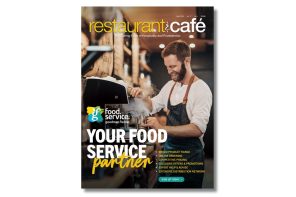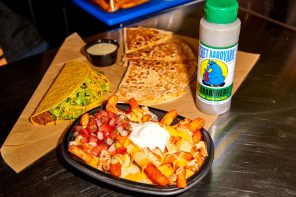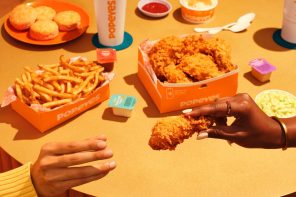On the eve of Anuga, the world's largest trade fair for food and beverages, the Anuga Executive Summit offers a selected circle of national and international decision-makers from the food industry and food trade a stage where they can discuss the latest industry trends. The Anuga Executive Summit is a specialist conference and networking get-together in one. Famous experts convey practice-oriented and industry-related knowledge in a condensed format and give valuable impulses for a lively discussion at the subsequent reception. This year the Anuga Executive Summit is called "Omnishoppers Everywhere - Challenges of the Digitalisation for the Food Trade and Consumer Good Industry," featuring Johannes Steegmann (Rewe) and Matthias Heutger (DHL) as speakers. The Anuga Executive Summit is being staged at the Theater am Tanzbrunnen in Cologne on October 6.
The event is jointly organised by the Federal Association of the German Retail Grocery Trade (BVLH), the Federation of the German Food & Drinks Industries (BVE) and Koelnmesse GmbH.
Following the specialist part, three winners of the "Anuga Chef of the Year" competition will make sure that Anuga gets off to a suitable culinary start. With their individual cooking styles, Sebastian Frank (Horvat Berlin), Christian Sturm-Wilms (Yuniko Bonn) and Stefan Lenz (Tennerhof, Kitzbühel/AT) stand top-level unconventional, modern cuisine.
The digitalisation is the dominating theme of the Anuga Executive Summit. The digital revolution has already hit the food manufacturers and the food trade too. New data-driven concepts are not only changing the marketing, sales and procurement of food, but also the product development and organisation of the flows of goods. They also go hand in hand with an evolution of the corporate culture, because the management of digital business units demand new team management approaches.
Several business models are currently competing against each other when it comes down to digital marketing strategies for food. These include digital marketplaces, B2C models, speciality dealers and pure online supermarkets with their own logistics and goods risk or subscription models.
This diversity corroborates the forecast that is in the meantime shared by most of the market researchers: As a food buyer, the consumer will soon become an omnishopper, combining the purchasing channels to please himself. He expects a networked buying experience, where the bricks-and-mortar trade, online media and the usage of mobile device all merge into one.
The customer of the near future will predominantly gain information about products from the social media and on virtual marketplaces and comparison portals. He will primarily use his smartphone or tablet for this purpose. Mobile apps will thus become more and more important both for gaining information prior to and while buying food as well as for product marketing.
Networked buying experiences for omnishoppers. Consumers will use messenger services more and more frequently as purchasing tools. This is why more and more trading companies and manufacturers of consumer goods are intensively examining the potential of chatbots. The vision is for the conversation robot that is based on artificial intelligence to act as a virtual shopping assistant and digital purchasing consultant in one. First pilot projects are already being tested in practice.
The technology for the ever-faster progressing merging together of the online and offline trade is already available. In this way, sensors on the sales area communicate with the smartphone of the customer. This makes it possible to lead him to the respective shelf and transfer the corresponding product information and stimulation to buy items to his mobile phone. This branch navigation per mobile phone can also be implemented for analysing the customers' movements.
The digitalisation is not only bringing big changes with it for the trade, but also for the consumer goods manufacturers. They are also increasingly worried that they will be replaced by digital business models, which satisfy the newly defined customer needs more efficiently or more cheaply.
FMCG manufacturers are encountering this threat in different ways. On a structural level, more and more companies are creating an own field of responsibility for the digital business under the direction of a CDO. They are founding own subsidiaries in order to draw up digital business models, they are acquiring such know-how by taking over companies or are entering cooperations with successfully operating start-up developers.
Companies that see the consumer as an omnishopper, who views the shopping channel as overriding, also have to take a more holistic and customer-centred approach to supply chain management and logistics. Omnishoppers not only want to be able to shop anytime and everywhere, but also want to have the goods delivered to every desired location anytime. Single channel strategies do less and less justice to these changed consumer needs.
The direct contact to the consumer varies depending on the channel. In the case of the online trade there is a shift here compared to the bricks-and-mortar trade. The package deliverer is namely the direct contact partner - in other words the logistic service provider, it is no longer the dealer. That is why the logistics provider has information about the customer that compliments that of the dealers. If both are linked the result is an information edge.
Through his experiences gained from the deliveries, the logistics provider can assess the on-site structural situation for instance, whether there are safe places to deposit the deliveries, at what time somebody is usually at home or how often goods are returned. Thus an important information data set is available, which can be recorded with the help of digital solutions and which are essential for good omni-channel solutions.
The time slot precise delivery or the utilisation of new delivery points such as package boxes are big challenges for the route planning or for the management of ordering processes. In the near future, self-learning and self-driving systems could be implemented for the purpose. Even autonomous delivery in the public sector using a small robot vehicle is no longer utopian.
For more information, the exhibitor database and admission tickets: www.anuga.com






